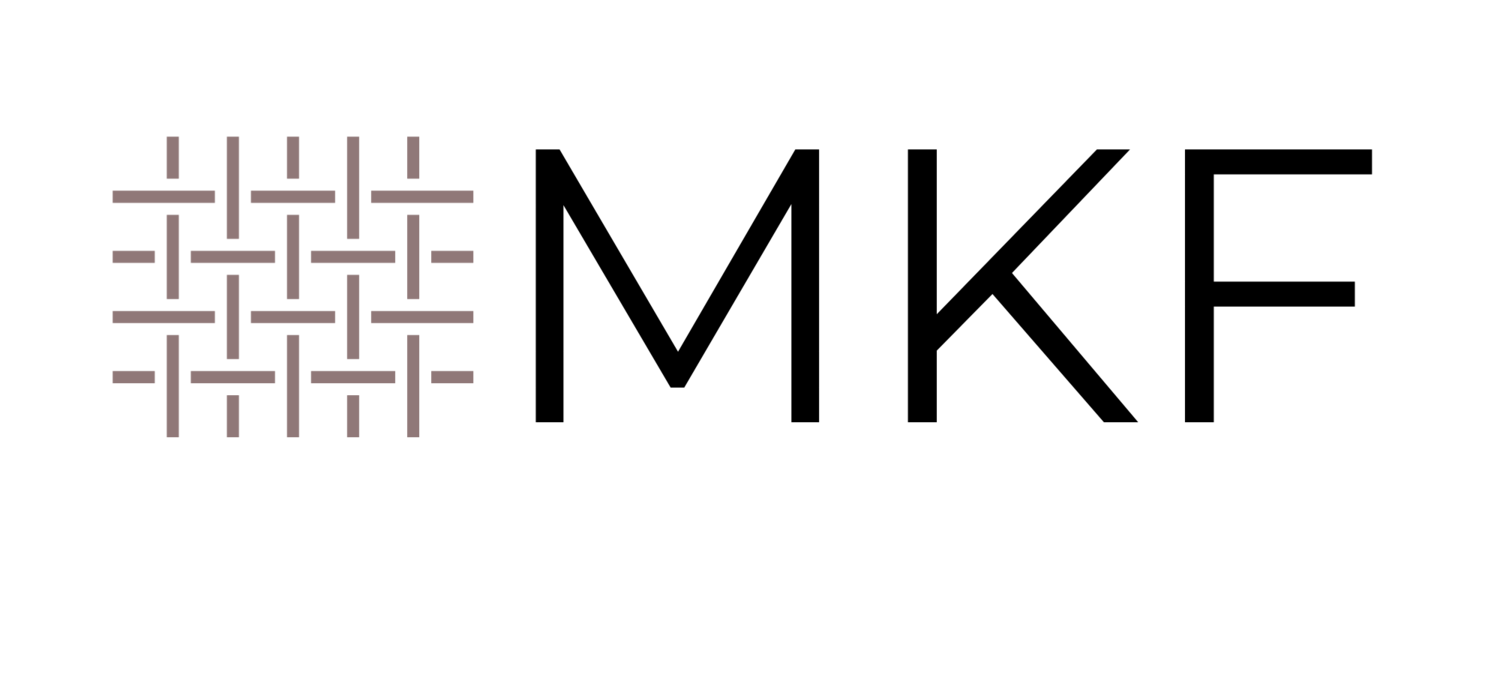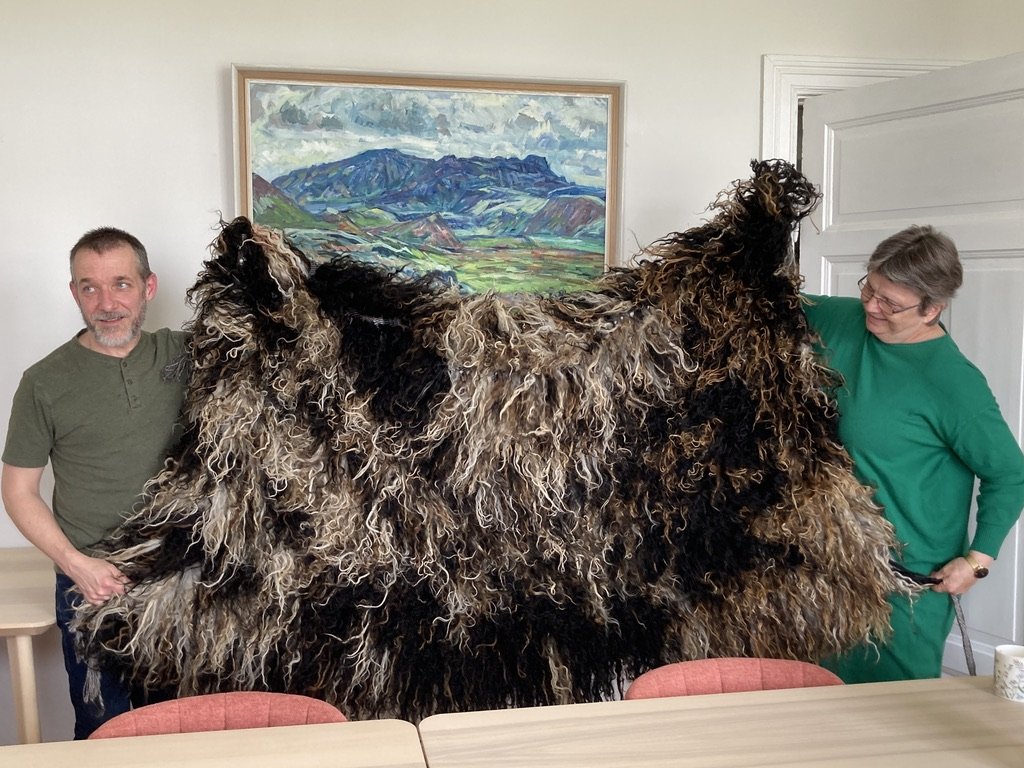Fibre, gesture, twist and structure are all enmeshed in handmade cloth. I have always been fascinated by the fundamental principles of cloth construction. This has drawn me towards ancient cloth and the people who made it. Since January I’ve been working away on an online course exploring prehistoric textile techniques taught by experimental archaeologist Sally Pointer. It has been really exciting to think around textiles at this early stage in human and non-human history. I’ve even managed some rudimentary antler needles thanks to the provision of some flint flakes by friend, archaeologist and flint-knapper extraordinaire Jason Roe.
My research of all things ancient textiles had me travelling to Iceland last May to weave Shelter/In plain sight at the Icelandic Textile Centre in Blönduós. (Read more about the project HERE.) Perhaps the most exciting thing about this adventure was the opportunity to experience a wholly different approach to cloth construction. I combed locks of Icelandic wool for hours. My arms ached as I worked on a fourth, then a fifth fleece. “It will be worth it”, I told myself as each wavy tog lock was drawn from the fuzzy soft pthel.
The soft fibres were spun into weft yarns and the long tog locks sorted by colour. These were then knotted into the warp in a pattern prescribed by an image of Icelandic turf - a scheme I questioned often as the weaving progressed. Sorting several shades of tog locks and arranging them according to a digital diagram took far longer than I anticipated. Would a landscape, or at least the feeling of one be manifested in the finished textile? I sure hoped so.
Original image of Icelandic turf used in Shelter/In plain sight in the centre. At the right is a reduced/digitized version using shades of Icelandic tog. At the right is the same image separated into thirteen columns - each row of knotted tog required thirteen double-ended tufts. You will note within each column there is often two shades which required combining black/grey, grey/brown and blends of each for lighter or darker shades.
Weaving the Vararfeldur or “Shaggy Cloak” tested both my physical and mental endurance with every five centimetres of weaving taking at least an hour - not counting the time combing, sorting spinning and knotting. I truly love to weave, and yet it would seem that one can have too much of a good thing. The work was finished just in time when my husband and daughter - themselves on an epic Icelandic road trip - came to collect this weary weaver.
Johanna Palmadottir regards my weaving as the residents met for a farewell coffee at the culmination of the May 2024 Os Residency. (Thank you Anie Toole for the photo!)
Shortly before my family arrived, the May 2024 Os Residency artists met for farewell coffee. I was excited to show Johana Palmadottir the finished weaving. She is the shepherd and project manager at the Icelandic Textile Centre who provided wool for the ground weft and pile. I remember how she looked at the cloth I had just cut from the loom - it was like she recognized each of the sheep woven into the piece. I’m not sure many people will ever see this piece the way she does. I think that sometimes we think about the audience for our work in a really abstract way. This brief interaction reminded me that someone who encounters your work may also be seen as a collaborator or even co-conspirator - someone to make the work with. I consider Johanna’s profound knowledge of her animals and their keeping to be a part of Shelter/In plain sight, both literally in that the quality of the wool is a direct result of her work, but also in a conceptual sense when we think about the reciprocity in crafting objects using agricultural materials.
Apron cloth at the Icelandic Textile Museum. The yarn for the apron cloth was spun by Ingibjörg fiór›ardóttir of Hof in Svarfa›ardalur, and woven by Sigur›ur Jónsson of Brekkuger›i in Fljótsdalur. around 1900.
Shelter/In plain sight was part of my exhibition Drawn at the Discovery Gallery at the Alberta Craft Council in Edmonton, Canada along with other recent weaving. In September 2025 an iteration of Drawn will open at the Alberta Craft Council Gallery at CSpace in Calgary. Because this gallery is larger, I have the opportunity to add some new work to the exhibition. Inspired by an exquisite roll of wool apron cloth at the Icelandic Textile Museum in Blönduós, I am weaving several small (approx 40 x 70 cm) panels with Icelandic wool on a fine silk warp. Using the frequency of the natural coloured wool stripes in the checked apron cloth as a jumping off point, I plan to compose and weave horizontal bands of Icelandic wool in different natural shades.
Handspun Icelandic pthell in shades of black and brown or “mórautt”
The structure for this weaving will afford a double-sided cloth with a different sequence on each face. I found the structure drafted in Ragnaheidur Bjork Thorsdottir’s excellent book Listin að vefa (note the book is in Icelandic but contains beautiful, clear illustrations and diagrams for anyone keen on contemporary Icelandic weaving). Typically used for firm, hardwearing wool textiles, this structure affords an insulating weft-faced cloth. In contrast, I will use the same structure for something much lighter and weave translucent cloth that hides and reveals patterns on the reverse face depending on the density of my beat and the relative thickness of the weft threads used. I am not entirely certain how this one will turn out but am hoping for something that has the feeling of the apron cloth laid over a moody Icelandic/Canadian prairie landscape. I plan to stain the silk warp before weaving in a manner similar to my Tissue/lake series. For some reason I am thinking to title the new series “Slough” but then titles usually arrive later when the work is complete.
Once my current weaving project is complete, I will be converting my Glimakra Standard loom to a countermarche setup with a Myrehed Single-Unit Drawloom. I have some weaving planned with this new equipment and look forward to sharing more very soon.
THANK YOU for subscribing to my studio newsletter “The Fell” - it is a real privilege to share my love for textiles with you and I hope that you will be encouraged to join in conversation with me. If you have questions or comments you may leave them here, (CLICK HERE to access comments for this post and scroll to the bottom of the page) but you may also reach me by email HERE.
Not yet subscribed? Add your email HERE.







